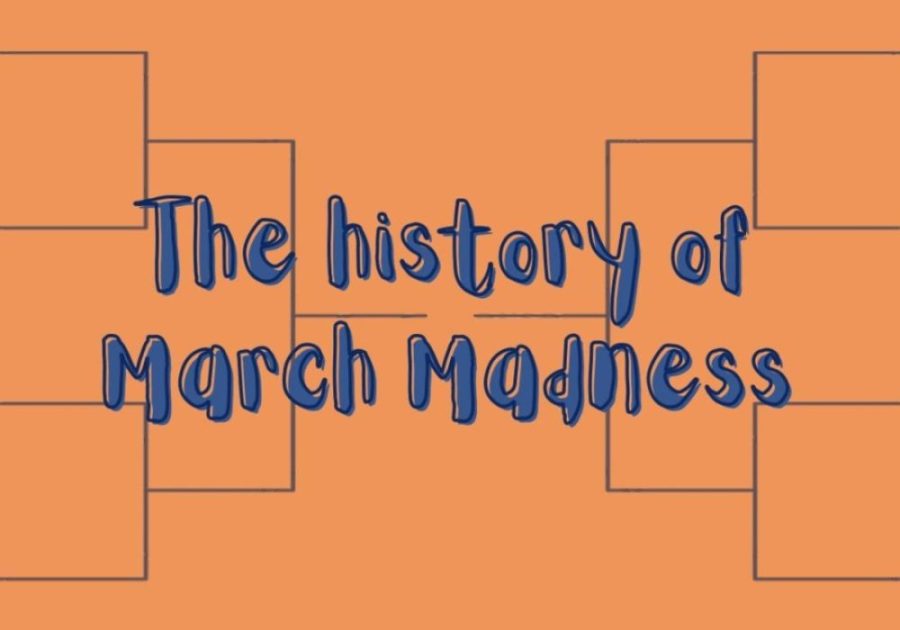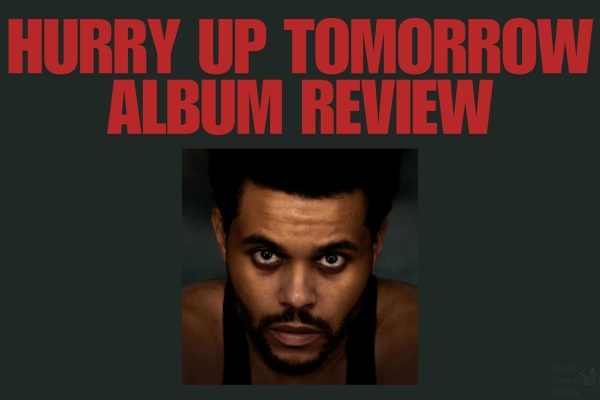Column: The history of March Madness, ‘The Big Dance’
Student fan taps into the past of the NCAA Division I basketball tournament.
A Canva image, made by Isabel Multer, provides a bracket graphic. The 2023 March Madness tournament started on March 14. Play for the “Final Four” teams begins Saturday, April 1. “I think this year’s turnout so far has been unbelievable,” Multer said. “The first round alone completely shocked me.”
Broadcasting live on a Thursday evening, reporter, Brent Musberger, covers the shocking upsets of the 1982 NCAA Division I Men’s basketball tournament. “Folks, this is madness,” Musberger said. “This is March Madness.”
Eighty-four years ago, one of the most thrilling and entertaining annual sporting events began. The NCAA Division I Men’s basketball tournament, or “March Madness,” brings together the best 68 college basketball teams to compete in a seven-round bracket and name the national champions. The tournament, known for its stunning upsets, frustrates, yet excites, fans as more than 60 million brackets are filled out each year.
If decided by a coin flip or a guess, the one-in-9.2-quintillion odds of creating a perfect March Madness bracket brings passion and intensity to viewers. Oregon became the first men’s national champions in the eight-team 1939 bracket, and Louisiana Tech won the first women’s tournament in 1982.
The size of the competition doubled to 16 teams in 1951, 32 in 1975, and finally 64 in 1985 to choreograph a wider, more dynamic spread of competition. The “First-Four” round consists of the two play-in games to complete the 68-team pool. Since these expansions had to happen over several years, the National Invitation Tournament held the fans’ attention despite the creation of the NCAA Division I tournament. During the late 1960s, larger, well-known schools began participating in the NCAA tournament, bringing it into the top spotlight it shines in now.
This gradual change has left the NIT to the teams who do not qualify for the NCAA tournament. Despite the unpredictability of March Madness, some names have become familiar when looking back at the history of the tournament.
One of these standout schools includes Duke University. Former head coach, Mike Krzyzewski, holds the most NCAA tournament wins by a single coach – with 97 total. To add to Duke’s legacy, former player, Christian Laettner, holds the record of the all-time leading scorer in the history of the tournament with 407 points. The University of California, Los Angeles has earned the most championships with 11 total.
The region match-ups, seeding, and predictions can only get you into so much rhythm when it comes to The Big Dance, so here are some March Madness takes from Prosper High School students.
“When I made my bracket this year, I didn’t have much of a strategy,” sophomore Asher Ellingson said. “I just went through the bracket pretty fast and didn’t pick enough upsets, which was what messed it up so bad. This season’s March Madness has been way too crazy for anyone to be close to predicting.”
Junior Bella Franks did say she employed a method when it came to filling out her bracket.
“My strategy was just picking the team I like better,” junior Bella Franks said. “My thoughts on this year’s tournament are that Houston should have won it all.”
As of March 30, the final four teams, Florida Atlantic University, San Diego State, University of Connecticut, and University of Miami, are set to compete on April 1 to determine the championship match-up.
With its’ boundless possibilities, March Madness will continue its’ iconic legacy for generations to come.
Your donation will support the student journalists of Prosper High School. Your contribution will allow us to purchase equipment and cover our annual website hosting costs.

2024 Best in Texas News & Broadcast
Honorable Mention Anchor Reel
Excellent Sports Feature Story
Excellent Feature Story Video Package
Honorable Mention Feature Story Video
Honorable Mention Feature Story Video
2023 Best in Texas News & Broadcast
Honorable Mention Sports Feature Story
Honorable Mention Sports Column












![Freshman Polly Greaves created this updated version of the original graphic through Canva. Their next episode reviews a science fiction novel, 'Ender's Game.' "I feel like [Orson Scott Card] did a really good job incorporating feelings into his words and the plot," Greaves said, "which really made it a work of art because I believe that good books are books that can make you feel something."](https://eaglenationonline.com/wp-content/uploads/2025/02/EndersGame_Cover3-600x420.png)

